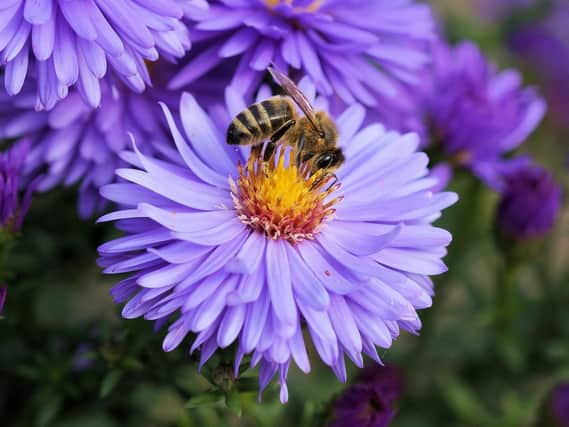Five ways to make your garden more bee-friendly


We rely on these insects to pollinate our plants and without them the UK could stand to lose £690 million per year in failed crops like rapeseed, which is almost exclusively pollinated by bees.
Measures put in place to counteract this decline, such as planting wildflowers in the margins of fields, have been shown to improve pollinator numbers. Harrod Horticultural recommend 5 simple ways to make your garden more bee-friendly.
1. Take a break from weeding


Advertisement
Hide AdAdvertisement
Hide AdIdeal for low-maintenance gardeners, a good tip for making your patch pollinator-ready is abstaining from weeding. This is because many of the plants we weed are actually rich in pollen and nectar.
If you can’t stand the idea of leaving your lawn to grow wild, another option is to choose a small section of your plot, preferably somewhere south facing and well drained, and leaving it to grow unmanaged. This will offer solitary bees and other insects the perfect place to nest. You can also use this corner of the garden to teach your children about wildlife.
2. Plant bee-friendly flowers
Bees aren’t necessarily fussy when it comes to where they source their nectar, but many of the plant varieties cultivated by humans (or cultivars, as they’re known) have extra parts that make it difficult for bees to reach the nectar inside.


Buying one wildflower for every hybrid plant you pick up at the garden centre will make sure everyone’s happy. A broad range of plants will also ensure a continuous flowering period, providing a healthy supply of bee-nourishing nectar from spring to autumn. If you’re unsure about which flowers to plant, there are plenty of lists online to help you decide.
3. Make a bee hotel
Advertisement
Hide AdAdvertisement
Hide AdBee hotels aren’t nearly as demanding as the name suggests. In fact, building one can take less than an hour with the right tools.
Lots of bee species do something called ‘cavity-nesting’, which means they’re naturally oriented towards nesting in small spaces like the hollow stems of plants or dead wood. A bee hotel replicates these environments and provides solitary species a place to recuperate after a long day’s foraging or, in the case of queen bees, somewhere to hibernate during winter.
To build one of your own, simply tie together a handful of bamboo canes or drill a block of wood with 5-10mm holes, store it somewhere above head height and make sure it’s situated in a part of the garden that receives plenty of natural light.
4. Avoid pesticides
Neonicotinoids are a type of neuro-active insecticide chemically similar to nicotine. They were widely used across the EU up until last year, when a major report confirmed they were harmful to bees.
Advertisement
Hide AdAdvertisement
Hide AdNewer, bee-friendly pesticides are now available, although their safety is still unclear. So until this new generation of pesticides has been thoroughly investigated, you’re probably better off using old-fashioned techniques that don’t use any toxic chemicals.
One way to remove pests is to actually wash your plants. You can do this by spraying them with water or using a light soapy solution. Installing nets or fruit cages is another tried-and-tested method for protecting your crop.
5. Think about water
Water is important to any living thing, but it’s especially important to bees. They use it for hydration, dissolving crystallised honey during winter and cooling their nests to incubate their young.
Bees require a dependable source of water year-round, and the best sources are ones that won’t dry up, won’t drown the bees and aren’t shared by livestock. An easy way to make a bird bath more bee-friendly is to add a few stones or decorative glass pebbles to the basin. This will brighten up your garden and give the bugs somewhere safe to perch when fetching a drink of water.
Advertisement
Hide AdAdvertisement
Hide AdIntroducing a bee hotel to your garden is a sure-fire way to attract native pollinators to your patch. It may take longer to become accustomed to not using pesticides or mowing your lawn.
But in the end, regardless of what the neighbours may say, you can pat yourself on the back for doing your bit to help the environment and protect your local bee population.